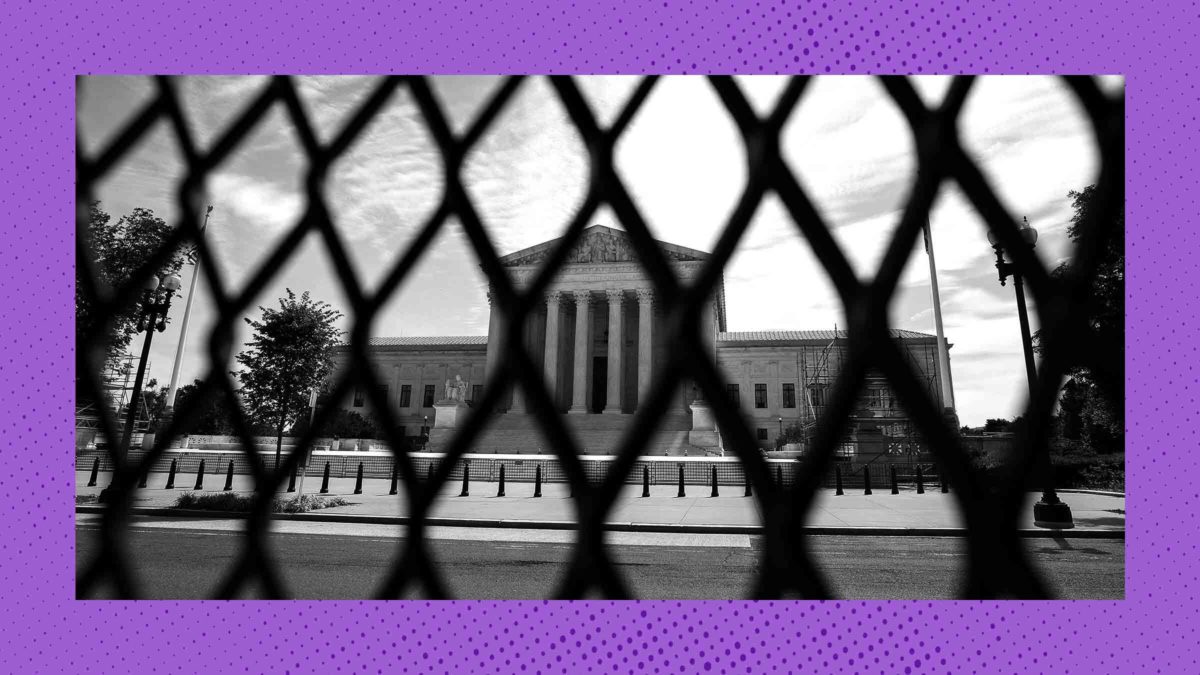Getting justice when police are the offenders is notoriously difficult. Officers can be sued under a federal law known as Section 1983, but unless a court in the same jurisdiction had previously decided that the exact same police conduct was illegal, the judge-made doctrine of qualified immunity protects cops from consequences. If police violate your rights during the arrest and you’re subsequently convicted of a crime, a 1994 Supreme Court case, Heck v. Humphrey, means you can’t bring a lawsuit against them. If a prosecutor violates your rights, you are somehow even more screwed: The doctrine of absolute immunity, created by the Court in 1976 in Imbler v. Pachtman, will almost always shield prosecutors from accountability from their actions.
There’s one other option for people whose civil rights are violated by police departments with long histories of violating civil rights: Sue the city that signs those officers’ paychecks. But thanks to another Supreme Court decision, Monell v. Department of Social Services, that route is basically a dead end for anyone who tries to take it.
The facts of Monell, which the Court decided in 1978, don’t actually involve police departments. Rather, Monell was about two female employees of two departments in New York state—the Board of Education and the Department of Social Services. They sued under Section 1983, alleging these departments had a policy of forcing pregnant employees to take unpaid leave when it wasn’t medically necessary. In Monell, the Court held that people can bring Section 1983 claims against municipalities or other local government units, including police departments. But it also added a massive caveat: The rule only applies if the bad behavior was part of some “policy statement, ordinance, regulation, or decision officially adopted and promulgated by that body’s officers.”
So, for a municipality to be liable for the behavior of its police, the Court has set up a series of progressively higher bars for people to clear: First, they have to prove a Section 1983 violation, showing they were deprived of a constitutional right by a police officer who was acting under “color of law”—in other words, abusing their authority. Then, because of Monell, plaintiffs must also prove the city has a policy, law, or regulation that authorizes the unconstitutional behavior. Municipalities, of course, don’t typically write down their most illegal rules in employee handbooks, which means that Monell mostly functions to keep people out of court altogether.
A clever plaintiff might try to argue that a policy of, say, “hiring bad cops who do bad things” should count. But the Monell Court also held that municipalities aren’t liable merely for employing bad actors. This is unique in U.S. law: Generally, when employees are acting within the scope of their employment and do something wrong, the employer is responsible for their conduct. But local governments, wrote Justice William Brennan for the majority, are not liable “for an injury inflicted solely by its employees or agents.” Under Monell, they are only liable “when execution of a government’s policy or custom…inflicts the injury.” People don’t hurt people. Policies hurt people.
In the decades since, the Supreme Court has only made Monell are more effective tool for blocking claims of civil rights violations. In 1986, the Court in Pembaur v. Cincinnati acknowledged that an “official policy” was “often but not always committed to writing, thus leaving open the possibility that a plaintiff could identify an unwritten policy that harmed them. But the Pembaur Court threw in another wrinkle: Plaintiffs have to identify the policymaker, too—someone who made a deliberate decision to follow a given course of action. That person doesn’t have to be an elected official, but does have to be someone who could establish a policy “under appropriate circumstances.”

People secure in the knowledge that they can do whatever they want (Photo by Brett Carlsen/Getty Images)
This rule is, to use a technical term, vague as hell. And since different governments use different org charts, Pembaur forces plaintiffs to reinvent the wheel every time. A plaintiff could make a great case that, say, a police sergeant ordered several cadets to beat up suspects. But unless the plaintiff can also show that in that particular city, police sergeants have the authority to set that cadets-beat-up-suspects rule, they’re out of luck.
Three years later, in Canton v. Harris, the Court made things still more difficult. After police in Canton, Ohio, arrested Geraldine Harris and took her to the police station, they failed to provide her with medical care when they found her slumped on the floor. In a subsequent lawsuit, Harris demonstrated that shift commanders had the discretion to determine whether someone needed medical attention, but no medical training. On its face, this looks like a promising case. But the Canton Court decided that to make a “failure to train” claim, plaintiffs had to show that this failure “amounts to deliberate indifference.” Proving the city had poorly-trained officers is not enough: After Canton, people have to prove the offending city actively, expressly never gave a shit.
When the Supreme Court had the chance to apply this “deliberate indifference” standard in 1997, in Bryan County v. Brown, things went as badly as you’d expect. Stacy Burns, a reserve sheriff’s deputy in Bryan County, Oklahoma, pulled Jill Brown out of her car during a traffic stop when she didn’t get out quickly enough for Burns’s liking. Burns flung her to the ground using what the court called an “arm bar” technique, forcing her to undergo corrective surgery on both knees.
Brown sued, arguing that the county was liable for Burns’s behavior because it failed to conduct a real background check; if they’d done so, they would have found that he’d pleaded guilty to a laundry list of misdemeanors, including resisting arrest and assault and battery. The sheriff got Burns’s driving record and a report from the National Crime Information Center, but admitted that he had “not closely reviewed either.” In a possibly related story, Burns was the son of the sheriff’s nephew.
The Supreme Court agreed that the sheriff was the policymaker. They agreed he’d failed to screen Burns before hiring him. But the Court still ruled against Jill Brown, because it wasn’t “obvious” that inadequate screening would lead to an unhinged deputy shredding her knees someday. (For good measure, the Court added that even if Brown had proved the sheriff hired Burns despite his shoddy record, that would show a mere indifference to Burns’ record, not a deliberate indifference to Brown’s constitutional rights.) The opinion in Brown took great pains to explain that “cases involving constitutional injuries allegedly traceable to an ill-considered hiring decision pose the greatest risk that a municipality will be held liable for an injury that it did not cause.” The danger to the city is paramount; the danger to its citizens is too attenuated for the justices to care about it.
Any functioning legal system should provide some measure of relief to people who are harmed by the police. Unfortunately, this country is stuck with a legal system helmed by the U.S. Supreme Court instead. Thanks to Monell and its progeny, judges have a million ways to get rid of pesky lawsuits against cities that employ bad cops, thereby empowering those cities to keep doing it as freely as they’d like. It’s the powerful protecting the powerful, using every procedural trick in the book.

